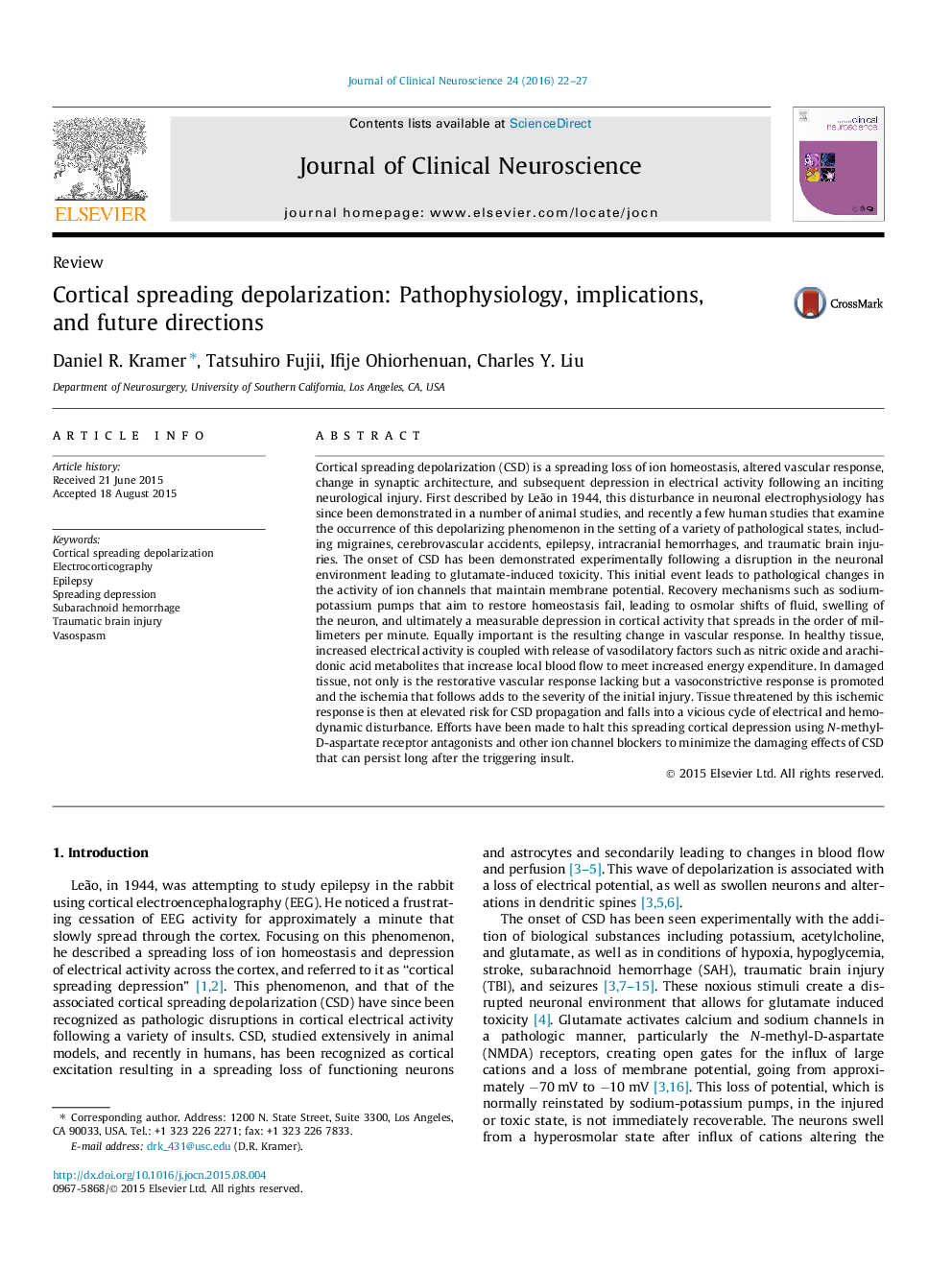| کد مقاله | کد نشریه | سال انتشار | مقاله انگلیسی | نسخه تمام متن |
|---|---|---|---|---|
| 3058754 | 1580292 | 2016 | 6 صفحه PDF | دانلود رایگان |

• Cortical spreading depolarization (CSD) is a pathological loss of ion homeostasis.
• CSD is associated with an aberrant vascular response resulting in ischemia.
• CSD can occur following a variety of neuronal injuries (trauma, strokes, seizures).
• Many pharmacological agents disrupt CSD and are well suited for therapy.
• Ubiquity of CSD suggests an important pathway in secondary injury.
Cortical spreading depolarization (CSD) is a spreading loss of ion homeostasis, altered vascular response, change in synaptic architecture, and subsequent depression in electrical activity following an inciting neurological injury. First described by Leão in 1944, this disturbance in neuronal electrophysiology has since been demonstrated in a number of animal studies, and recently a few human studies that examine the occurrence of this depolarizing phenomenon in the setting of a variety of pathological states, including migraines, cerebrovascular accidents, epilepsy, intracranial hemorrhages, and traumatic brain injuries. The onset of CSD has been demonstrated experimentally following a disruption in the neuronal environment leading to glutamate-induced toxicity. This initial event leads to pathological changes in the activity of ion channels that maintain membrane potential. Recovery mechanisms such as sodium-potassium pumps that aim to restore homeostasis fail, leading to osmolar shifts of fluid, swelling of the neuron, and ultimately a measurable depression in cortical activity that spreads in the order of millimeters per minute. Equally important is the resulting change in vascular response. In healthy tissue, increased electrical activity is coupled with release of vasodilatory factors such as nitric oxide and arachidonic acid metabolites that increase local blood flow to meet increased energy expenditure. In damaged tissue, not only is the restorative vascular response lacking but a vasoconstrictive response is promoted and the ischemia that follows adds to the severity of the initial injury. Tissue threatened by this ischemic response is then at elevated risk for CSD propagation and falls into a vicious cycle of electrical and hemodynamic disturbance. Efforts have been made to halt this spreading cortical depression using N-methyl-D-aspartate receptor antagonists and other ion channel blockers to minimize the damaging effects of CSD that can persist long after the triggering insult.
Journal: Journal of Clinical Neuroscience - Volume 24, February 2016, Pages 22–27